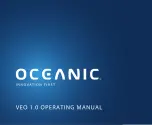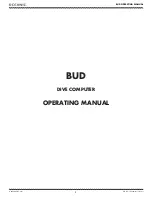
3-11
SeCTIon 3
Bipolar Transistor Tests
3.6.2 example Program 8: I
Ceo
Test
Use Program 8 to run I
CEO
tests on bipolar transistors . Follow
these steps to run the program:
With the power off, connect a dual-channel System Source-
1 .
Meter instrument to the computer’s IEEE-488 interface .
Connect the test fixture to both units using appropriate
2 .
cables .
Turn on the instrument and allow the unit to warm up for two
3 .
hours for rated accuracy .
Turn on the computer and start Test Script Builder (TSB) . Once
4 .
the program has started, open a session by connecting to the
instrument . For details on how to use TSB, see the Series 2600
Reference Manual .
You can simply copy and paste the code from Appendix A in
5 .
this guide into the TSB script editing window (
Program 8
),
manually enter the code from the appendix, or import the TSP
file ‘Iceo .tsp’ after downloading it to your PC .
If your computer is currently connected to the Internet, you
can click on this link to begin downloading:
http://www.
keithley.com/data?asset=50917
.
Install a small-signal NPN silicon transistor such as a 2N3904
6 .
in the appropriate transistor socket of the test fixture .
Now, we must send the code to the instrument . The simplest
7 .
method is to right-click in the open script window of TSB,
and select ‘
Run as TSP file
’ . This will compile the code and
place it in the volatile run-time memory of the instrument .
To store the program in non-volatile memory, see the “TSP
Programming Fundamentals” section of the Series 2600 Refer-
ence Manual .
Once the code has been placed in the instrument run-time
8 .
memory, we can run it at any time simply by calling the func-
tion ‘
Iceo()
’ . This can be done by typing the text ‘
Iceo()
’
after the active prompt in the Instrument Console line
of TSB .
In the program ‘
9 .
Iceo.tsp
’, the function
Iceo(vstart,
vstop, vsteps)
is created .
vstart represents the initial voltage value in the V
•
CE
sweep
vstop represents the final voltage value in the V
•
CE
sweep
vsteps represents the number of steps in the sweep
•
If these values are left blank, the function will use the default
values given to the variables, but you can specify each variable
value by simply sending a number that is in-range in the func-
tion call . As an example, if you wanted to have the start voltage
be 1V, the stop value be 11V, and the number of steps be 20,
you would send
Iceo(1, 11, 20
) to the instrument .
The sources will be zeroed and then enabled . The program
10 .
will execute a voltage sweep on the collector-emitter and
measure the collector-emitter current (I
CEO
) at each point .
Once the measurements have completed, the data (V
11 .
CE
and I
CE
)
will be presented in the Instrument Console window of TSB .
3.6.3 Typical Program 8 Results
Figure 3-8
shows an example I
CEO
vs . V
CEO
plot generated by
Program 8 . The device used for this example was a 2N3904 NPN
transistor .
3.6.4 Program 8 Description
The instrument is returned to default conditions . SMUA, which
sweeps V
CEO
and measures I
CEO
, is set up as follows:
Source V
•
Local sense
•
10mA compliance, autorange measure
•
1 NPLC Line cycle integration
•
I
V
Series 2600
System
SourceMeter
Channel A
Source V
CEO
Measure I
CEO
V
CE
Test
Fixture
Transistor
Under Test
Leave Base open
Output LO
I
CEO
Figure 3-7. Configuration for I
Ceo
tests
Summary of Contents for Series 2600
Page 5: ......
Page 7: ......
Page 17: ...2 8 Section 2 Two terminal Device Tests...
Page 39: ...4 10 Section 4 FET Tests...
Page 53: ...6 4 Section 6 High Power Tests...
Page 130: ...A 77 Appendix A Scripts BJT_Comm_Emit_Vsb...
Page 136: ...Click below to find more Mipaper at www lcis com tw Mipaper at www lcis com tw...
















































